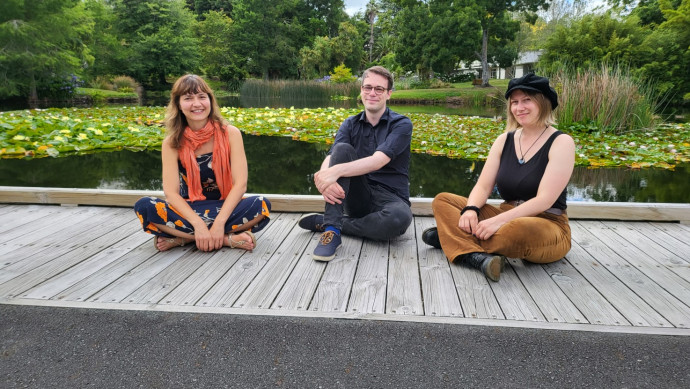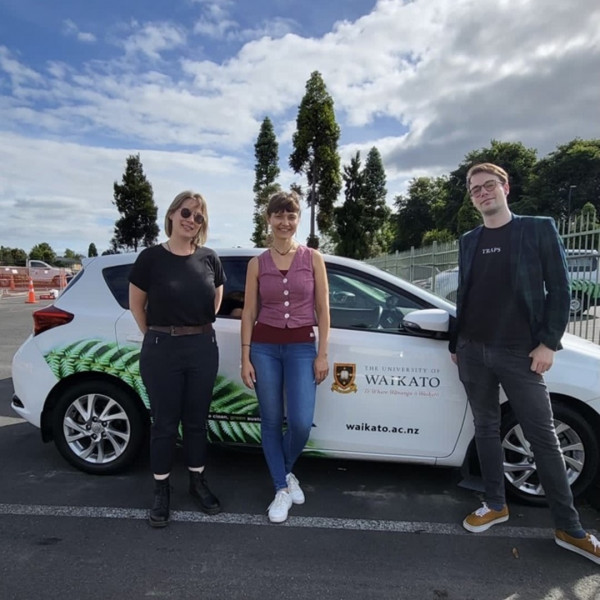Research
Published 19 January 2024Two languages in my kete: changes in the New Zealand English lexicon

Following extensive research investigating the numerous words that New Zealand English (NZE) borrows from te reo Māori, Dr Calude of Te Whare Wānanga o Waikato University of Waikato and her team are studying what the youngest generation of NZE speakers – tamariki – are making of these.
Like nomadic travellers, words wander from one language into another. While most are transient, what happens to those that stick around? It is not uncommon to tune into RNZ or TVNZ and hear Māori words or phrases interspersed among English ones. Words like hui, aroha, kura and kaitiaki are also common in newspaper articles and social media posts.
It’s tempting to think that mixing languages in this way is confusing, a barrier to communication, or ‘political correctness gone mad’. Maybe you hear your own children using these words and phrases and wonder about it. Mixing languages is neither new, nor unique to NZE, nor a predictor of language demise. It is what most multilingual nations have been doing for centuries, in different places around the world, including Belgium, Switzerland, South Africa, India, Brazil, and Papua New Guinea.
Languages are leaky. We like to draw clear boundaries around them and contain them within neatly delineated borders. But this simplistic view of language doesn’t account for what speakers actually do. Keeping languages apart has more to do with nationalism than communication. Languages never stand still, and NZE is no exception. As words of Māori origin weave into NZE, children exposed to them are acquiring not just new lexical items and their meanings, but also social and cultural associations about the speakers who use them. Research elsewhere tells us that, between the ages of 8-11, children’s journey of cognitive development leads them to increase their awareness of their peer group. Tied in with such awareness comes information linking language use (words and grammar) with social characteristics of the speakers using them (intelligence, friendliness, trustworthiness and prestige). In this project, Dr Calude and team want to find out what Kiwi children in mainstream English language education are making of kupu Māori borrowings entering their variety of English.

Dr Calude (centre) and PhD students Jessie Burnette (left) and Alex Pohl (right) will visit local schools to find out what Kiwi children in mainstream English language education are making of kupu Māori borrowings entering their variety of English (Photo by Sara Malik).
Dr Calude states “This work is both exciting and challenging! It is exciting because it allows us to gain a deeper understanding of our own English voice and to make a contribution to the wider research field (developmental sociolinguistics) internationally. The opportunity for innovation arises from the fact that NZE provides a unique case-study of language contact. First, nowhere else do we find a variety of English acquiring so many borrowings from an Indigenous language scaling up its quest for revitalisation. Secondly, the tamariki we intend to talk with are not bilinguals, many (probably most) do not speak Māori themselves. (In contrast, most existing literature on the acquisition of language attitudes and associations relates to bilingual children.) This mahi is challenging because we cannot elicit attitudes directly from children lest we might be told what they perceive to be the ‘right’ or ‘desirable’ answer.”
The linguistic crystal ball is impossible to read, but the best clue as to what the future holds for borrowed words in NZE can be gleaned from the attitudes of the most avid drivers of change: our tamariki.
RESEARCHER
Dr Andreea Calude
ORGANISATION
Te Whare Wānanga o Waikato University of Waikato
FUNDING SUPPORT
Marsden Fund
CONTRACT OR PROJECT ID
UOW2202
